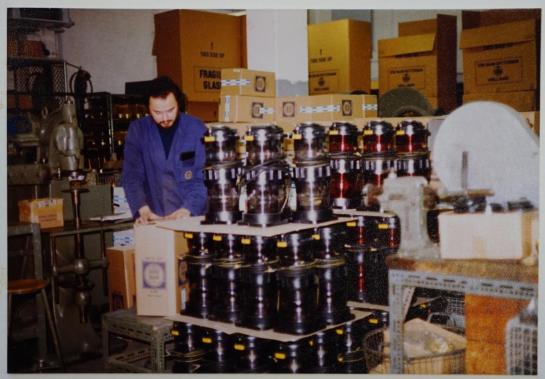The use of the European waterways and the oceans for transportation became more and more intensive and expectations were high. In 1970 a global intervention came. New rules and guidelines were developed for navigation lights and acoustic signalling for example. The visibility needed to be increased and the construction of electric bulbs was defined precisely. The global intervention agreed that all seagoing vessels after 1976 and inland navigation vessels after 1984 where obliged to adopt these new rules. To adapt our products to these new standard seemed nearly impossible but also a big challenge.
After a lot of information and a careful consideration the transition from metal to plastic was made. It turned out that it was this transition that made a significant contribution to the company’s growth. And is perhaps the reason of DHRs existence nowadays.
DHR launched three types of lanterns; for seagoing vessels, for inland navigation vessels and for water sports purposes. The completely modular design was greatly appreciated by the ship-owners. It was hard to keep up with the demand for this new type of lights, even with a total of 60 employees. And a new markets emerged in the Middle and Far East.
